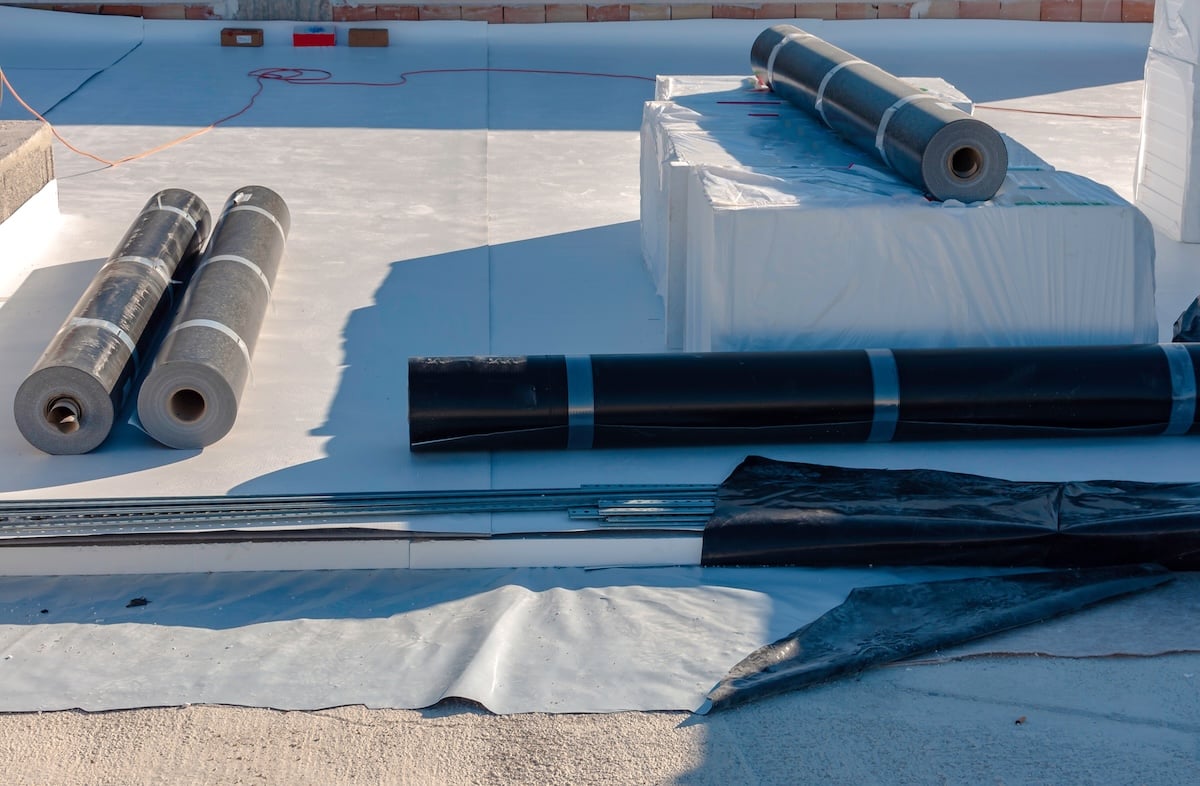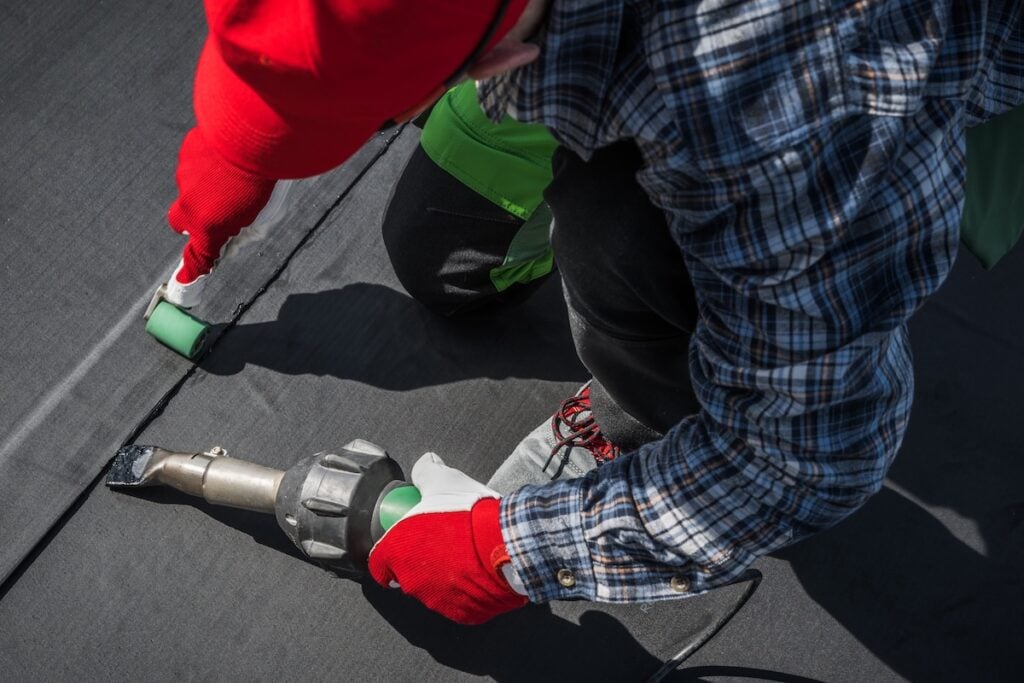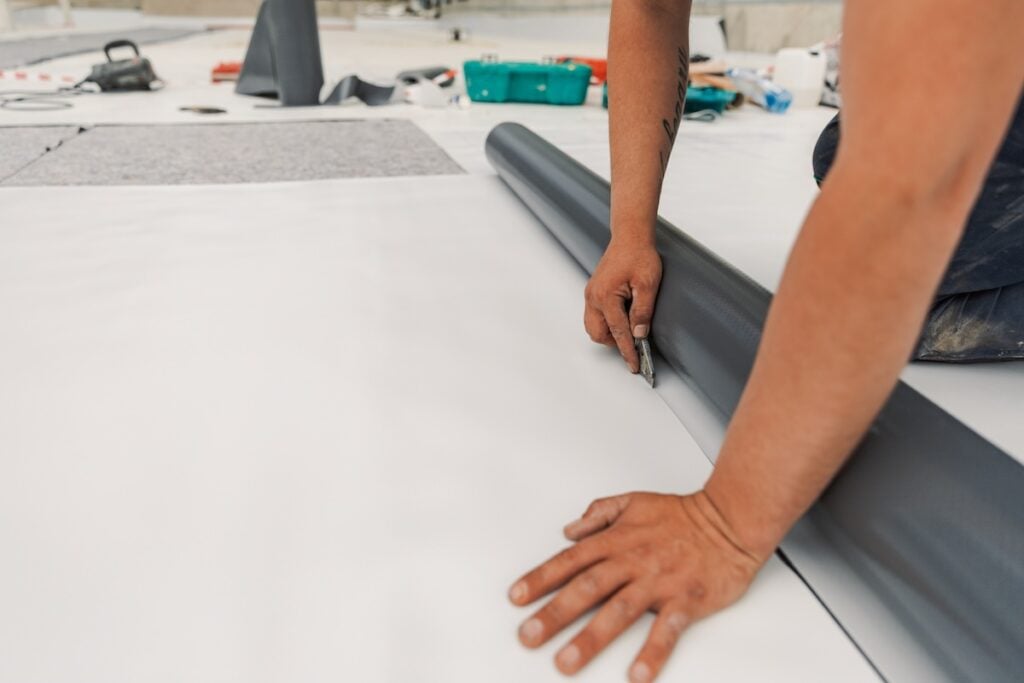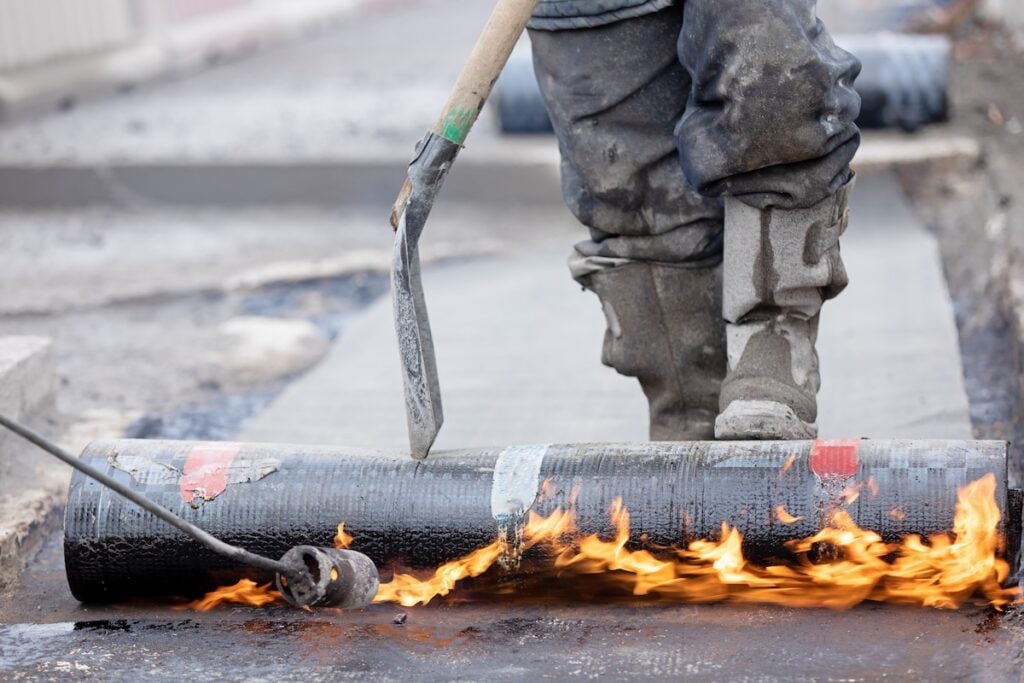
5 Main Flat Roof Materials Used on Commercial Roofs
July 01,2025
5 minutes Read
Choosing the right flat roof materials is critical for any commercial building. A flat roof needs to be more than just weather-resistant—it must also stand up to heavy use, drainage demands, and long-term wear across thousands of square feet. With so many options available, understanding what each material offers is the first step toward protecting your investment and maintaining the integrity of your roof structure.
In this blog, you’ll learn:
- The most common roofing materials used for commercial flat roofs
- How each one performs in terms of durability, cost, and energy efficiency
- What factors influence your decision based on your building’s design and usage
Here’s a breakdown of the most effective flat roofing systems on the market today.
❗️ Why Commercial Roofs Use Flat Roof Systems
Unlike pitched designs, flat roofs cover large, level areas and serve multiple functions—making them ideal for industrial and business properties. Because these systems don’t shed water as quickly, they require flat roof materials that can stand up to pooling, punctures, and foot traffic.

What Makes Flat Roofs Unique
- Minimal slope: These roofs use a low pitch, typically between 1/4 and 1/2 inch per foot, to encourage drainage.
- Heavy load tolerance: HVAC units and solar panels are often mounted on the roof deck.
- Multi-purpose space: Some flat roofs even double as patio or green areas.
For the roof to function properly, the roofing material must be watertight and flexible enough to handle movement and temperature fluctuations.
✅ Benefits of Flat Roofing Systems
Whether it’s a new install or a replacement project, there are several advantages to choosing a flat roofing system for commercial buildings.
Key Benefits
- Cost-effective installation: Flat roofs use less framing and fewer materials per square foot than sloped designs.
- Easier access: Routine inspections, cleaning, and equipment maintenance are safer and simpler.
- Modern style: Clean lines and a functional surface align with contemporary architecture.
- Energy efficiency: Some membrane roofing types offer high reflectivity, reducing energy costs.
To maximize those benefits, you need to choose a material that matches your needs.
⭐️ 5 Main Flat Roof Materials

- TPO (Thermoplastic Polyolefin):
TPO is one of the most popular membrane roofing systems for commercial applications. It’s a white, reflective, single-ply material that reduces cooling costs and resists algae and chemical buildup. TPO membranes are heat-welded at the seams to create a watertight barrier and are typically applied over insulation or the roof deck. - EPDM (Ethylene Propylene Diene Monomer):
Also known as epdm ethylene propylene diene, this synthetic rubber roofing material is black and highly flexible. It performs exceptionally well in both hot and cold climates and resists UV rays and ozone. EPDM is either fully adhered, mechanically fastened, or ballasted and has a proven lifespan of over 30 years in many cases. - PVC (Polyvinyl Chloride):
Polyvinyl chloride is another type of membrane roofing, known for its chemical resistance and long-term durability. Ideal for restaurants or facilities that produce grease-laden vapors, PVC is heat-welded like TPO and comes in reflective white for energy savings. It’s more expensive than other single-ply systems but extremely reliable. - Modified Bitumen Roofs:
These modified bitumen roofs are asphalt-based systems that are reinforced with fiberglass or polyester. They come in rolls and are applied using heat, peel-and-stick methods, or cold adhesives. Modified bitumen offers great flexibility, especially in colder regions, and provides a highly durable waterproof surface. - Built Up Roof (BUR):
Sometimes called a built up roof membrane, BUR is one of the oldest commercial roofing systems. It consists of alternating layers of tar and felt topped with gravel or coating. While heavier and more labor-intensive, BUR systems offer excellent waterproofing and UV resistance for low-slope applications.
📋 Comparing the Flat Roof Materials
When evaluating flat roof materials, it helps to compare them side by side based on several key performance factors.
Durability & Lifespan
- EPDM: Offers the longest average lifespan, often exceeding 30 years.
- Modified bitumen and BUR: Provide excellent resistance to punctures and heavy foot traffic.
- TPO and PVC: Last about 20–30 years with proper maintenance and installation.
Cost Per Square Foot
- TPO and EPDM: Typically fall on the lower end of cost per square foot, making them popular for large-scale commercial buildings.
- PVC: More expensive but offers added protection for sensitive environments.
- BUR: Price depends heavily on the number of layers and labor involved.
Maintenance Requirements
- Single-ply membranes: Easy to inspect and repair but require vigilance for seam integrity.
- BUR and modified bitumen: Require occasional re-coating and attention to surface granules.
- All systems: Should be inspected at least twice yearly and after major storms.
🛠️ Installation Methods and Equipment
Each material comes with its own method of installation, which can impact project costs and timelines.

Application Techniques
- Heat-welded: Common for TPO and PVC, providing seamless bonding.
- Adhesive or self-adhering: Used for modified bitumen, often rolled out and smoothed with a roller or spray gun.
- Ballasted: EPDM can be installed loose-laid and held down with stone or pavers.
The right equipment, whether it’s a roller or spray gun, can make all the difference in achieving proper adhesion and long-term performance.
💪 Pick the Right Material for a Stronger Flat Roof
Choosing the right flat roof materials for your commercial building means considering your budget, climate, building usage, and long-term performance goals. From synthetic rubber like EPDM to multi-layer systems like built up roof or modified bitumen, each type of roofing material has strengths suited for specific situations.
At Heartland, we’re committed to helping property owners make informed, confident decisions. If you’re planning a roof upgrade or replacement, we’re here to evaluate your roof deck, assess your current system, and help you choose a solution built to last.
Contact Heartland today to schedule your free inspection and explore flat roof materials that fit your needs and budget.

Get Started Today!
From roofing to siding, Heartland Roofing is the team you need to take your home exterior to the next level. All you need to do is reach out! Fill out our contact form or give us a call to get the reliable help that you need.
4.7 rating
94% recommend
A+ rating